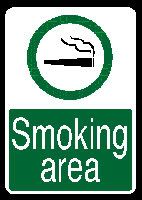Washington, DC: The results of a recent Canadian study identifying the presence of various respiratory pollutants in marijuana smoke should be seen as an opportunity to better educate cannabis consumers about ways to mitigate the health risks associated with smoking, NORML Senior Policy Analyst Paul Armentano said today.
The study, which will appear in the forthcoming issue of the journal Chemical Research in Toxicology, reports that greater concentrations of certain respiratory irritants such as ammonia, hydrogen cyanide (HCN), and various aromatic amines (nitrogen-related chemicals) are produced during the combustion of marijuana than during the smoking of tobacco. (Investigators speculated that the presence of each of these chemicals was likely due to Health Canada’s use of high-nitrate fertilizer when cultivating cannabis.) By contrast, investigators also reported that mainstream marijuana smoke contained lower levels of selected polycyclic aromatic hydrocarbons compared to tobacco. Exposure to certain polycyclic aromatic hydrocarbons has been associated with increased cancer risk in animals and is suspected to play a in role in the proliferation of various human cancers, such as breast cancer and lung cancer.
Tobacco-specific nitrosamines, arsenic, and lead were not present in marijuana smoke, investigators noted.
Armentano said that many of the unwanted chemicals contained in marijuana smoke, including HCN and many polycyclic aromatic hydrocarbons, may be reduced or eliminated by engaging in vaporization rather than smoking. “By heating marijuana to a temperature where active cannabis vapors form, but below the point of combustion, consumers significantly reduce their intake of gaseous combustion toxins, including carbon monoxide,” he said.
Most recently, investigators at San Francisco General Hospital reported in the journal Clinical Pharmacology & Therapeutics that the "vaporization of marijuana does not result in exposure to combustion gases, ... and is preferred by most subjects compared to marijuana cigarette." A previous clinical trial published in 2006 in the Journal of Pharmaceutical Sciences reported that vaporization is "safe and effective" cannabinoid delivery system that "avoid[s] the respiratory disadvantages of smoking.”
Armentano also affirmed that cannabis smoking is not positively associated with cancers of the lung, mouth, or upper aerodigestive tract (e.g., pharynx, larynx, or esophagus). In 2006, the results of the largest case-controlled study ever to investigate the respiratory effects of marijuana smoking reported that pot use was not associated with cancer, even among subjects who reported smoking more than 22,000 joints over their lifetime.
"While smoking cannabis may pose some minor respiratory risks to the user, these health risks are far less than those posed by tobacco smoking and may be significantly mitigated by engaging in vaporization as an alternative to smoking," Armentano concluded. "Unfortunately, cannabis prohibition greatly limits consumers’ access to such devices and impedes technological advancements in this area – subjecting users to respiratory risks that they would otherwise avoid."
For more information, please contact Paul Armentano, NORML Senior Policy Analyst, at: paul@norml.org. Full text of the study, “A comparison of mainstream and sidestream marijuana and tobacco cigarette smoke produced under two machine smoking conditions,” appears online (ahead of print) at: http://pubs.acs.org/cgi-bin/abstract.cgi/crtoec/asap/abs/tx700275p.html.





















No comments:
Post a Comment